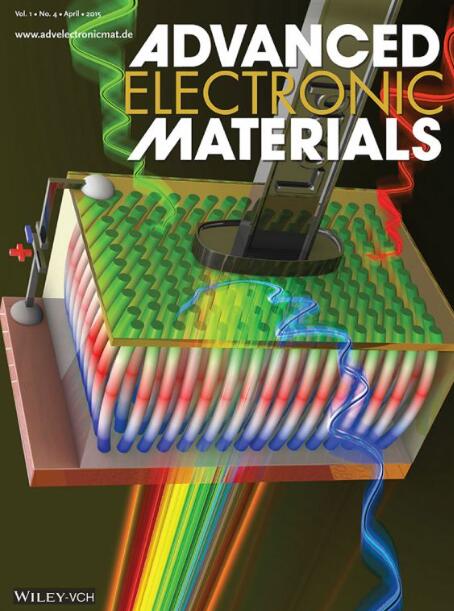外延镍钴氧化物薄膜中巨型本征交换偏压的微观结构基础
IF 5.3
2区 材料科学
Q2 MATERIALS SCIENCE, MULTIDISCIPLINARY
引用次数: 0
摘要
了解名义上单组分铁磁性或铁磁性材料中的内在交换偏压对于简化相关设备架构至关重要。然而,这种现象背后的机制及其可调性仍然难以捉摸,这阻碍了实现单向磁化以广泛应用的努力。受反向尖晶石镍钴氧化物铁磁性高可调性的启发,我们研究了沉积在 Al2O3 (0001) 基底上的镍钴氧化物 (111) 薄膜的本征交换偏压的起源。包括电子衍射、X 射线反射仪和光谱仪以及偏振中子反射仪在内的综合表征结果表明,NiCo2O4 (111)/Al2O3 (0001) 薄膜中的本征交换偏压源于薄膜与基底之间界面上的重构反铁磁性岩盐 NixCo1-xO 层,这是由于显著的结构失配造成的。值得注意的是,通过在最佳生长条件下对界面结构进行设计,它可以获得大于矫顽力的交换偏置,从而导致单向磁化。这种巨大的固有交换偏压可用于实际器件应用。这项工作建立了一个基于新兴自旋电子材料 NiCo2O4 的新材料平台,用于研究可调的界面磁性和自旋电子特性。本文章由计算机程序翻译,如有差异,请以英文原文为准。

Microstructural Underpinnings of Giant Intrinsic Exchange Bias in Epitaxial NiCo2O4 Thin Films
Understanding intrinsic exchange bias in nominally single-component ferromagnetic or ferrimagnetic materials is crucial for simplifying related device architectures. However, the mechanisms behind this phenomenon and its tunability remain elusive, which hinders the efforts to achieve unidirectional magnetization for widespread applications. Inspired by the high tunability of ferrimagnetic inverse spinel NiCo2O4, the origin of intrinsic exchange bias in NiCo2O4 (111) films deposited on Al2O3 (0001) substrates are investigated. The comprehensive characterizations, including electron diffraction, X-ray reflectometry and spectroscopy, and polarized neutron reflectometry, reveal that intrinsic exchange bias in NiCo2O4 (111)/Al2O3 (0001) arises from a reconstructed antiferromagnetic rock-salt NixCo1-xO layer at the interface between the film and the substrate due to a significant structural mismatch. Remarkably, by engineering the interfacial structure under optimal growth conditions, it can achieve exchange bias larger than coercivity, leading to unidirectional magnetization. Such giant intrinsic exchange bias can be utilized for realistic device applications. This work establishes a new material platform based on NiCo2O4, an emergent spintronics material, to study tunable interfacial magnetic and spintronic properties.
求助全文
通过发布文献求助,成功后即可免费获取论文全文。
去求助
来源期刊

Advanced Electronic Materials
NANOSCIENCE & NANOTECHNOLOGYMATERIALS SCIE-MATERIALS SCIENCE, MULTIDISCIPLINARY
CiteScore
11.00
自引率
3.20%
发文量
433
期刊介绍:
Advanced Electronic Materials is an interdisciplinary forum for peer-reviewed, high-quality, high-impact research in the fields of materials science, physics, and engineering of electronic and magnetic materials. It includes research on physics and physical properties of electronic and magnetic materials, spintronics, electronics, device physics and engineering, micro- and nano-electromechanical systems, and organic electronics, in addition to fundamental research.
 求助内容:
求助内容: 应助结果提醒方式:
应助结果提醒方式:


